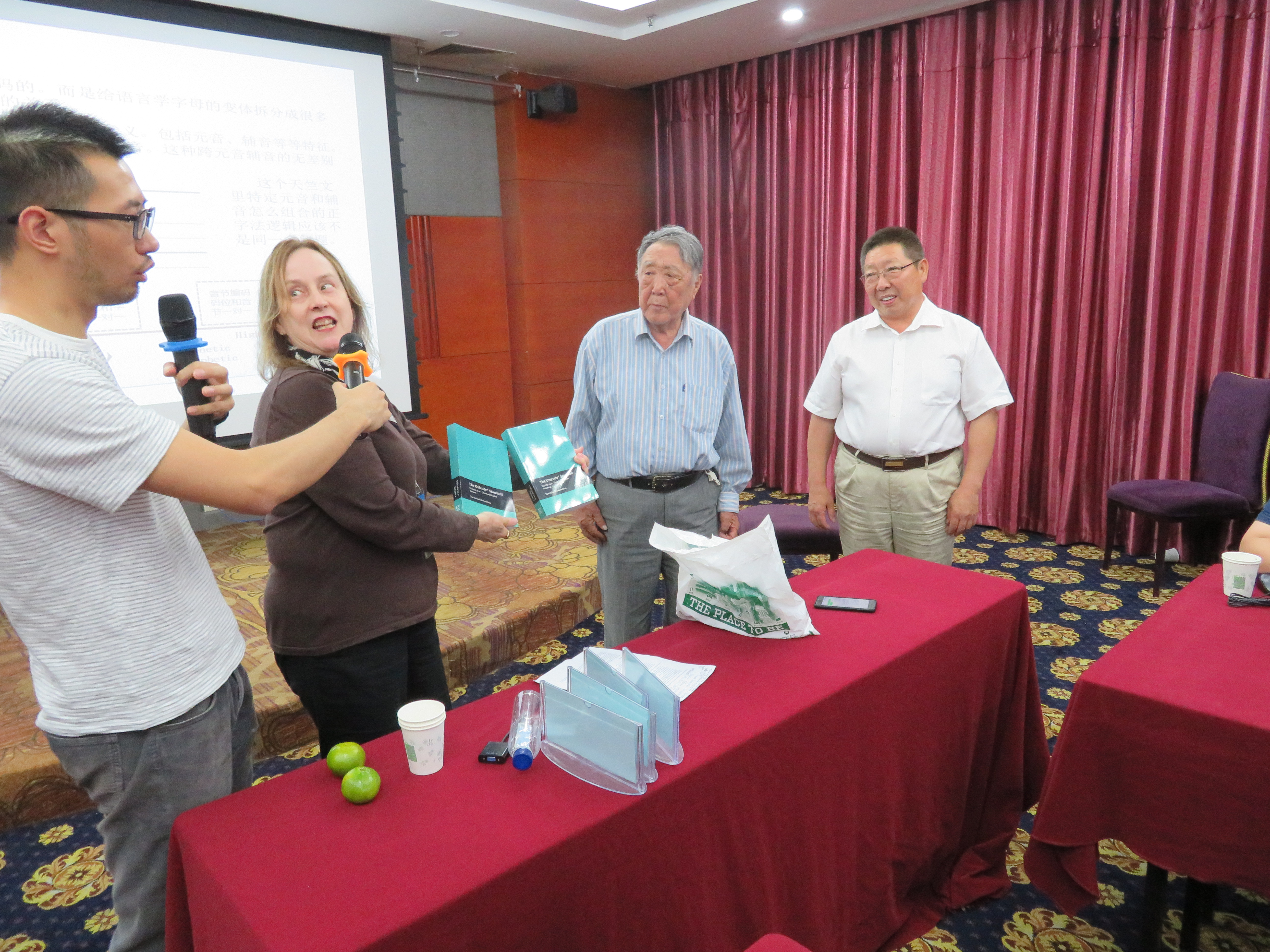|
Zapf Dingbats
ITC Zapf Dingbats is one of the more common dingbat typefaces. It was designed by the typographer Hermann Zapf in 1978 and licensed by International Typeface Corporation. History In 1977, Zapf created about 1000 (or over 1200 according to Linotype) sketches of signs and symbols. ITC chose from those a subset of 360 symbols, ornaments and typographic elements based on the original designs, which became known as ITC Zapf Dingbats. The font first gained wide distribution when ITC Zapf Dingbats, which consists of the subset chosen by ITC, became one of 35 PostScript fonts built into Apple's LaserWriter Plus. When ITC Zapf Dingbats was first announced in ''U&lc'' magazine, volume 5-2, the family was divided into the 100 series (ITC-100), 200 series (ITC-200), 300 series (ITC-300). Each series contains 120 symbols. Zapf Dingbats series 100 became widely implemented on PostScript printers, and gained currency as a pi font encoding in the 1980s and early 1990s. It incorporates se ... [...More Info...] [...Related Items...] OR: [Wikipedia] [Google] [Baidu] |
Dingbat
In typography, a dingbat (sometimes more formally known as a printer's ornament or printer's character) is an ornament, specifically, a glyph used in typesetting, often employed to create box frames (similar to box-drawing characters), or as a dinkus (section divider). Some of the dingbat symbols have been used as signature marks or used in bookbinding to order sections. In the computer industry, a dingbat font or pi font is a computer font that has symbols and shapes located at the code points normally designated for alphabetical or numeric characters. This practice was necessitated by the limited number of code points available in 20th century operating systems. Modern computer fonts containing dingbats are based on Unicode encoding, which has unique code points for dingbat glyphs. Examples Examples of characters included in Unicode ( ITC Zapf Dingbats series 100 and others): Dingbats Unicode block Unicode provides code points for many commonly used dingbats, a ... [...More Info...] [...Related Items...] OR: [Wikipedia] [Google] [Baidu] |
Aladdin Free Public License
The Aladdin Free Public License, abbreviated AFPL, is a license written by L. Peter Deutsch for his Ghostscript PostScript language interpreter. History The license was derived from the GNU General Public License, but differs on two key points: * The source code must be included with any software distribution. * The software may not be sold, including any fees involved with distribution. Deutsch chose to include a commercial restriction in the AFPL based on his observation of people including Ghostscript in commercial products without full license compliance. Recent versions of Ghostscript are not licensed under the AFPL. Despite the name, the Free Software Foundation does not consider the AFPL a free software license, neither the OSI consider it an open-source license Open-source licenses are software licenses that allow content to be used, modified, and shared. They facilitate free and open-source software (FOSS) development. Intellectual property (IP) laws restrict t ... [...More Info...] [...Related Items...] OR: [Wikipedia] [Google] [Baidu] |
Symbol Typefaces
A symbol is a mark, sign, or word that indicates, signifies, or is understood as representing an idea, object, or relationship. Symbols allow people to go beyond what is known or seen by creating linkages between otherwise different concepts and experiences. All communication is achieved through the use of symbols: for example, a red octagon is a common symbol for " STOP"; on maps, blue lines often represent rivers; and a red rose often symbolizes love and compassion. Numerals are symbols for numbers; letters of an alphabet may be symbols for certain phonemes; and personal names are symbols representing individuals. The academic study of symbols is called semiotics. In the arts, symbolism is the use of a concrete element to represent a more abstract idea. In cartography, an organized collection of symbols forms a legend for a map. Etymology The word ''symbol'' derives from the late Middle French masculine noun , which appeared around 1380 in a theological sense signifying a ... [...More Info...] [...Related Items...] OR: [Wikipedia] [Google] [Baidu] |
International Typeface Corporation Typefaces
International is an adjective (also used as a noun) meaning "between nations". International may also refer to: Music Albums * ''International'' (Kevin Michael album), 2011 * ''International'' (New Order album), 2002 * ''International'' (The Three Degrees album), 1975 *''International'', 2018 album by L'Algérino Songs * The Internationale, the left-wing anthem * "International" (Chase & Status song), 2014 * "International", by Adventures in Stereo from ''Monomania'', 2000 * "International", by Brass Construction from ''Renegades'', 1984 * "International", by Thomas Leer from ''The Scale of Ten'', 1985 * "International", by Kevin Michael from ''International'' (Kevin Michael album), 2011 * "International", by McGuinness Flint from ''McGuinness Flint'', 1970 * "International", by Orchestral Manoeuvres in the Dark from '' Dazzle Ships'', 1983 * "International (Serious)", by Estelle from '' All of Me'', 2012 Politics * Internationalism (politics) * Political international, a ... [...More Info...] [...Related Items...] OR: [Wikipedia] [Google] [Baidu] |
Unicode Consortium
The Unicode Consortium (legally Unicode, Inc.) is a 501(c)(3) non-profit organization incorporated and based in Mountain View, California, U.S. Its primary purpose is to maintain and publish the Unicode Standard which was developed with the intention of replacing existing character encoding schemes that are limited in size and scope, and are incompatible with multilingual environments. Unicode's success at unifying character sets has led to its widespread adoption in the internationalization and localization of software. The standard has been implemented in many technologies, including XML, the Java programming language, Swift, and modern operating systems. Members are usually but not limited to computer software and hardware companies with an interest in text-processing standards, including Adobe, Apple, the Bangladesh Computer Council, Emojipedia, Facebook, Google, IBM, Microsoft, the Omani Ministry of Endowments and Religious Affairs, Monotype Imaging, Netflix, Sales ... [...More Info...] [...Related Items...] OR: [Wikipedia] [Google] [Baidu] |
Gary Hustwit
Gary Hustwit is an American independent filmmaker and photographer. He is best known for his design documentaries, which examine the impact of trends in graphic design, typography, industrial design, architecture, and urban planning. He told ''Dwell'' magazine, "I like the idea of taking a closer look at the things we take for granted and changing the way people think about them." In addition to filmmaking, he has been active in the independent music and book publishing industries. Career While in college at San Diego State University in the mid-1980s, Hustwit began working with independent bands and promoting concerts. In 1987 he self-published the book "Releasing an Independent Record", a guide to how to start a record label. Hustwit continued to publish books by other authors about the music business, fiction, and poetry. Hustwit worked with punk record label SST Records in Los Angeles in 1989 and 1990, doing distribution. In 1999 Hustwit moved to New York City and opened ... [...More Info...] [...Related Items...] OR: [Wikipedia] [Google] [Baidu] |
Cryptogram
A cryptogram is a type of puzzle that consists of a short piece of encrypted text. Generally the cipher used to encrypt the text is simple enough that the cryptogram can be solved by hand. Substitution ciphers where each letter is replaced by a different letter, number, or symbol are frequently used. To solve the puzzle, one must recover the original lettering. Though once used in more serious applications, they are now mainly printed for entertainment in newspapers and magazines. Other types of classical ciphers are sometimes used to create cryptograms. An example is the book cipher, where a book or article is used to encrypt a message. History The ciphers used in cryptograms were created not for entertainment purposes, but for real encryption of military or personal secrets. The first use of the cryptogram for entertainment purposes occurred during the Middle Ages by monks who had spare time for intellectual games. A manuscript found at Bamberg states that Irish visitor ... [...More Info...] [...Related Items...] OR: [Wikipedia] [Google] [Baidu] |
Bryan Ferry
Bryan Ferry (born 26 September 1945) is an English singer and songwriter. He became known as the frontman of the band Roxy Music and also launched a solo career. His voice has been described as an "elegant, seductive croon". He also established a distinctive image and sartorial style: according to ''The Independent'', Ferry and his contemporary David Bowie influenced a generation with both their music and their appearances. Peter York described Ferry as "an art object" who "should hang in the Tate". Born to a working-class family, Ferry studied fine art and taught at a secondary school before pursuing a career in music. In 1970 he began to assemble Roxy Music with a group of friends and acquaintances in London, and took the role of lead singer and main songwriter. The band achieved immediate international success with the release of their self-titled debut album in 1972, containing a rich multitude of sounds, which reflected Ferry's interest in exploring different genres of mu ... [...More Info...] [...Related Items...] OR: [Wikipedia] [Google] [Baidu] |
Ray Gun (magazine)
''Ray Gun'' was an American alternative rock-and-roll magazine, first published in 1992 in Santa Monica, California. Led by founding publisher Marvin Scott Jarrett, art director David Carson and executive editor Randy Bookasta, along with founding editor Neil Feineman, ''Ray Gun'' explored experimental magazine typographic design and unique angles on the pop cultural currents of the 1990s. The editorial content was framed in a chaotic, abstract " grunge typography" style, not always readable (it once published an interview with Bryan Ferry entirely in the symbol font Zapf Dingbats), but distinctive in appearance. That visual tradition continued even after Carson left the magazine after three years; he was followed by a series of art directors, including Robert Hales, Chris Ashworth, Jason Saunby, Scott Denton-Cardew, Ian Davies, and Jerome Curchod. In terms of content, ''Ray Gun'' was also notable for its choices of subject matter. The advertising, musical artists and pop cult ... [...More Info...] [...Related Items...] OR: [Wikipedia] [Google] [Baidu] |
David Carson (graphic Designer)
David Carson (born September 8, 1955) is an American graphic designer and design director. Early life and career Carson was born on September 8, 1955, in Corpus Christi, Texas. Graduating from Rolling Hills High School, he continued his education and graduated from San Diego State University with a Bachelor of Arts in Sociology Sociology is the scientific study of human society that focuses on society, human social behavior, patterns of Interpersonal ties, social relationships, social interaction, and aspects of culture associated with everyday life. The term sociol .... Carson attending the Oregon College of Commercial Art studying graphic design and went to Switzerland for a workshop as a part of his degree. Carson surfed professionally before finding employment with magazine ''Self and Musician''. He then moved on to work at Transworld Skateboarding for four years. During those four years, he became the art director of the magazine and edited their magazine layou ... [...More Info...] [...Related Items...] OR: [Wikipedia] [Google] [Baidu] |
Arrow (symbol)
An arrow is a graphical symbol, such as ←, ↑ or →, or a pictogram, used to point or indicate direction. In its simplest form, an arrow is a triangle, chevron, or concave kite, usually affixed to a line segment or rectangle, and in more complex forms a representation of an actual arrow (e.g. ➵ U+27B5). The direction indicated by an arrow is the one along the length of the line or rectangle toward the single pointed end. History An older (medieval) convention is the manicule (pointing hand, ☚). Pedro Reinel in c. 1505 first used the fleur-de-lis as indicating north in a compass rose; the convention of marking the eastern direction with a cross is older (medieval). Use of the arrow symbol does not appear to pre-date the 18th century. An early arrow symbol is found in an illustration of Bernard Forest de Bélidor's treatise ''L'architecture hydraulique'', printed in France in 1737. The arrow is here used to illustrate the direction of the flow of water and of the wa ... [...More Info...] [...Related Items...] OR: [Wikipedia] [Google] [Baidu] |



